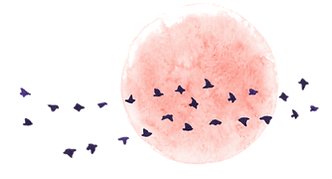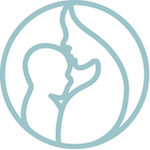I worked in a Big-C "Complementary Care" program in the cancer ward of Norwich hospital over 20 years ago, and adapted standard CST techniques to reduce various side effects of cancer treatment, including radiation burns, cording, lymphodema and discomfort around operation scars. Since then I have continued to develop these techniques to assist anything from recent operation scars, injuries, burns and adhesions through to chronic scars that have existed for decades.
Typical scar tissue / adhesion symptoms include pain, numbness, tightness, and general discomfort which can become "normalised" i.e. it becomes a normal experience in the body, wi the (incorrect) assumption that nothing can be done. I would say that almost everyone who has some injury or operation scar - be that recent or from several decades ago - could benefit substantially from the treatments I provide.
The work I carry out...
... and if there are no complicating factors, even with very old scars, very little treatment is required. I can also teach you some useful methods to apply at home which will help the treatments to have a long term effect.
Why are scars a problem?
I find that old scar and adhesion tissue is a common cause of "untreatable" pain. In particular, maybe 50% of the lower back pain problems I see are caused to some degree by old abdominal surgery scars. Old scar tissue tends to collect adhesions around it over time, and so effectively grows bigger. When this mass of adhesion exceeds the body's adaptive capacity, it causes pain somewhere - not necessarily at the scar site. So I see quite a few cases of 10-20 year old abdominal operation scars which are now causing back pain, headaches, constipation, gynecological problems, shoulder pain, and all kinds of other miscellaneous mayhem. In simple cases (i.e. where it is only the scar adhesion causing a problem), just one or two treatments is enough to clear the adhesions, return local mobility and end the symptoms. It really is that simple.
Scar tissue and adhesion comes in many forms. It can be very local - due to an incision/puncture wound or operation. Or it can be very general - due to (e.g.) heat or radiation burns, or old infections. I often find minor adhesions left over from lung infections causing problems round the shoulders and neck.
Scar tissue round accident scars, and operations sites are often easy to work with provided that there has not been a lot of internal disturbance - i.e. the external scar is connected to the internal adhesion/scar. So puncture wounds, cuts and direct operation scars (e.g. caesarian sections) will often show an improvement in quality of comfort and mobility in just one or two treatment sessions. Keyhole surgery is often less easy to work with, but still usually shows some improvement in comfort.
Where there has also been more general tissue damage - broken bones, impacts to the face, or crush injuries, again, simple injuries usually respond quite quickly. Craniosacral therapy is one of the few bodywork interventions that has very direct, safe and effective techniques to work directly with the structures of the face, and I have seen some substantial improvements in facial symmetry and shape when working with both recent and old injuries. The general rule is that more recent the injury, the less time it takes. However, one major complicating factor is shock, and it is the degree of shock that determines the effect of more recent scars and injuries.
Scars, shock and tissue healing
A factor which comes up with many adhesions and scars related top both accidents and operations is embodied shock. Shock is not a "mental" state, but rather is held physiologically in very primitive parts of the nervous system. This is the most common reason why normal healing does not take place and why physiotherapy or massage or manipulation does not help it to fully heal. I have substantial experience working with shock/trauma - particularly when it is associated with injuries and scars.
"Adhesion" is where fluid no longer lubricates adjacent layers of connective tissue, so that part of the body no longer moves easily, but rather the layers stick together and the body moves in one lump. This is most often found around the soft organs of the body - the digestive system and the lungs, and is often an indirect effect of local operation scar tissue or internal infections. The same principles as described above are used to work with these adhesions, and people are often surprised at how much increased comfort they feel. Minor non-clinical (i.e. not obviously caused by a medical condition or pathology) adhesions in the soft organs/viscera seem to be common causes of all kinds of musculoskeletal pain, particularly back pain, as local adhesions accumulate over decades. If you have old operation or other abdominal/thoracic scars or have had digestive problems in the past and now have back pain, then I would guess that there is more than a 50% chance that the back pain is caused at least in part by local visceral adhesions. In some cases as little as a single remobilisation of the abdominal contents can permanently relieve the pain. The whole principle of my hands-on work is very well described by this amazing video by the French plastic surgeon
Dr. Jean-Claude Guimberteau.
Cosmetic work
Although the main reason I work on scar tissue is to improve physical health, there is also sometimes some cosmetic improvement, usuallay a reduction in redness and an improvement in peripheral skin colour.
 Scar tissue and adhesions
Scar tissue and adhesions










